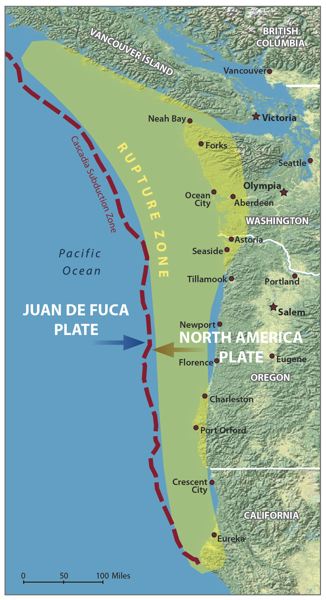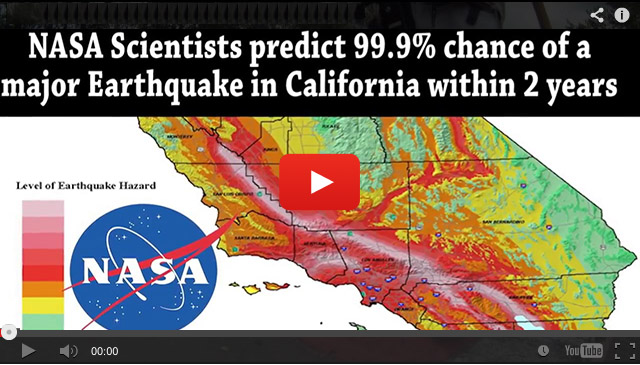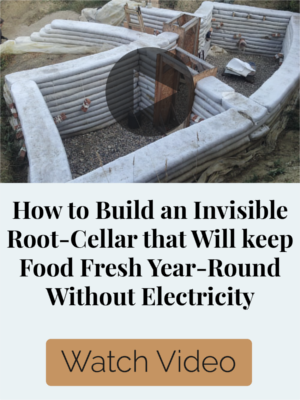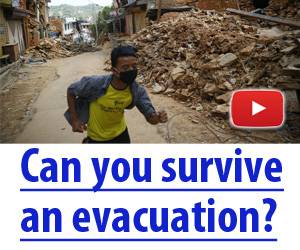
Mother Nature and the laws of physics have a death warrant out for humanity, says Michio Kaku. Can we escape it?
- The great science fiction writer Isaac Asimov put a terrifying question on humanity’s radar: Where will we be 50,000 years from now?
- Humanity is close to exhausting the known laws of physics; it’s the unknown – the unified theory of everything – that could dominate our destiny in the coming millennia. And that destiny is almost certainly tied to space travel. Why?
- “Extinction is the norm,” says Michio Kaku, 99.99% of all species on Earth eventually go extinct. “Mother Nature and the laws of physics have a death warrant for humanity,” says Kaku.
Every week Dr. Kaku answers a question from our readers. This week Bruce Vang asks “Are we ever going to develop a machine that can control the weather somewhat?”
Michio Kaku: Mark Twain was famous for saying, “Everyone complains about the weather, but no one ever does anything about it.” Well obviously to control the weather you’d have to have super powers. A simple thunderstorm has more energy than a hydrogen bomb, so to control the weather is very difficult.
The CIA tried it during the Vietnam War. They tried to seed the clouds with crystals, iodide crystals that formed nuclei to form rain clouds to stimulate a monsoon season.
The CIA did not like the Vietcong and the Vietcong would operate in the jungles, so why not stop them in their tracks by seeding the clouds and creating an artificial monsoon? Well that was a failure and it’s very humbling knowing that many countries have tried to control the weather.
None of these harebrained schemes have actually worked. However, now that we have global warming some people are saying that we really should think about altering the weather itself. There is a doomsday plan proposed by a Nobel laureate and that is that if the greenhouse effect spirals out of control we should put rockets to shoot pollutants into the atmosphere to reflect sunlight back into outer space.
That would be a doomsday mechanism to control the weather, but weather control is really for a type one civilization minimum 100 years in to the future.
Could a Changing Climate Set Off Volcanoes and Quakes?
A British scientist argues that global warming could lead to a future of more intense volcanic eruptions and earthquakes. And while some dismiss his views as preposterous, he points to a body of recent research that shows a troubling link between climate change and the Earth’s most destructive geological events.
Geological disasters might influence climate, for instance when volcanic debris blots out the sun. But climate cannot disrupt geology. How a Changing Climate Triggers Earthquakes, Tsunamis and Volcanoes.
The most solid evidence for climatic influence on geology comes from the end of the last ice age, around 12,000 years ago, says McGuire, who is a volcanologist and professor of geophysical and climate hazards at University College London. Analysis of volcanic deposits, published in the past decade by several authors, has found that this period of rapid climate change, when ice sheets retreated from much of the planet, coincided with a sudden outburst of geological activity. The incidence of volcanic eruptions in Iceland increased around 50-fold for about 1,500 years, before settling back to previous levels.
In the span of just 48 hours, a series of powerful earthquakes rocked several locations along the Pacific one by one this week, all in a seismic region known as the ‘Ring of Fire’ – and, others in its path, including California, are now wondering if they could be next.
Roughly 90 percent of the world’s earthquakes occur in this belt, which loops from New Zealand to Chile, passing through the coasts of Asia and the Americas on the way.
Experts say the series of earthquakes could have been caused by seismic waves travelling along fault lines and triggering ruptures in the Ring of Fire, also known as the Circum-Pacific belt.
Devastating earthquakes greater than 8.0 in magnitude are infrequent and occur at a rate of about one earthquake per year. However, the occurrence of several of these large earthquakes over the past decade, including two quakes in 2004, two quakes in 2006 and four quakes in 2007 has caused people to question if the frequency of high magnitude earthquakes has increased in the early part of this century.
Shearer is a Professor of Geophysics at Scripps Institution of Oceanography, and Stark is a Professor and Vice Chair of Statistics at the University of California. In looking through the historical record, these scientists noticed that a disproportionately high number of large earthquakes greater than 8.0 in magnitude also occurred between 1950 and 1965. Then, there was a bit of a slump in seismic activity from 1996 to 2003.
To determine the typical “background” seismic activity of the Earth over the past century, the scientists had to exclude earthquakes that could be classified as aftershocks from their analyses. They did so by eliminating from their data set those earthquakes that occurred within three years and 1,000 kilometers of the epicenter of the magnitude 8.0 and higher earthquakes under examination. When the scientists compared the resulting data set to three different mathematical models, they found no evidence that elevations in seismic activity since 2004 were statistically significant.
Furthermore, the scientists could find no plausible physical mechanism that could explain the possible occurrence of global seismic swarms. Hence, even though large earthquakes are infrequent and difficult to analyze, the scientist concluded that the global frequency of large earthquakes is no higher today than it has been in the past.
A Major Earthquake in the Pacific Northwest Looks Even Likelier
There is a 70 to 90 percent chance that northern Oregon will be hit by a magnitude-8 quake in the next year.
For about the last 30 million years, a small tectonic plate named Juan de Fuca has been sliding under the far vaster North American plate into the Earth’s mantle. Today, this mostly happens without anyone’s notice—even though it causes minor, near-undetectable earthquakes about every 300 days—but sometimes the pressure pent up is released suddenly and catastrophically.
A special report of the Intergovernmental Panel on Climate Change (IPCC) on extreme climate events, published in April, restricts its comments on McGuire’s ideas to a single paragraph. While conceding that crust movements resulting from melting ice “may result in an increase in earthquake activity, perhaps on timescales as short as 10 to 200 years,” it concludes that “there is low confidence in the nature of recent and projected future seismic responses to anthropogenic climate change.” McGuire says it is not yet clear if quakes, tsunamis and volcanoes will be addressed in the next full scientific assessment, due in 2019-2020.
Meanwhile, an article on Grist , suggests that climate change will cause earthquakes to increase. It’s an interesting read and looks at earthquake frequency in a much larger time frame (prehistoric to future activity) than covered in Shearer and Stark’s study (1900 to 2011). The Grist article mentions how the retreat of ice sheets might destabilize land masses and increase seismic activity.
The Earthquake that is About to Happen West of the US – Scientists Predict Thousands Will Die From Earthquake Expected Anytime on US West Coast – Prepare for the Looming Disasters
Researchers say a massive earthquake and tsunami could soon strike the Northwest US coast, killing more than 10,000 people, flooding entire towns, and causing economic damages totaling $32 billion.
An alarming report published by the Oregon Seismic Safety Policy Advisory Commission warns about the dire effects of the quake and claims that it is imminent and could strike anytime. The report, which was compiled by a group of more than 150 volunteer experts, was requested by the Oregon legislature in order to adequately prepare for the looming disaster.
The last high magnitude earthquake in the region occurred in the year 1700 in the Cascadia Subduction Zone. The quake had a magnitude between 8.7 and 9.2, and geologists in 2010 predicted that there is a 37 percent change of another such quake occurring within 50 years. The new report claims that there is a 100 percent chance of a monster earthquake occurring in the region.
“It’ll spread from Canada to California over 800 miles,” Oregon State University paleoseismologist Chris Goldfinger told CBN News.
One day it will happen. With little or no warning, the Cascadia Subduction Zone will produce a catastrophic earthquake and accompanying tsunami that will essentially destroy everything west of Interstate 5 in the Pacific Northwest.
According to the data buoy, the water column height (depth) fell sharply within minutes off the coast of Oregon, signaling the land beneath the ocean has suddenly “sunk.” Here are the graphs showing what the ocean data buoy recorded:


As of 0231:30, the initial water column height is 2738.80 Meters deep (8985.56 feet). Two minutes and thirty seconds later, that same water column height had dropped to 2738.66 Meters deep (8985.10 feet). Where did the four inches of water disappear to? Answer: The earth sunk; and continued to sink for the next several HOURS. As you can see from the second chart above, from 0230 GMT to 0600 GMT, the ocean continued to sink to 2737.7 meters deep (8981.95 feet). The buoy is too far away from shore to be affected by high/low tide, so where did the four feet of ocean water disappear to?
This means a Tectonic Plate in the Ocean named the “Juan de Fuca Plate” has made a sudden, eastward movement and slipped beneath another Tectonic Plate named the “North American Plate.” This type of event is usually followed by a massive upward movement of the North American Plate causing a very severe earthquake.

Here’s a map of the relevant Tectonic Plates:
In the year 1700, a similar movement of plates is believed to have been the cause of a Magnitude 9.0 earthquake, which devastated the west coast of north America, and generated an ocean Tsunami that washed inland upwards of ten MILES!
Lest you think that four feet of ocean depth is nothing to be concerned about, be reminded that the entire column of water . . . all 8985 feet of it . . . is what dropped four feet. And it did so over an area several miles wide!
When the tectonic plate snaps back upward, it can launch that entire 8985 foot column of water upward and toward the shore!
As the continental shelf rises toward the shore (the ocean gets more shallow) that 8985 foot column of water starts accumulating upon itself as it moves toward shore, becoming one massive wave, perhaps 45-50 feet tall, that hits the shore for twenty minutes!
Now do you see why this is a big deal?
If such a thing were to happen today, hundreds-of-thousands of people would be killed as a fifteen meter (45 foot) wall of water came ashore well inland passing Interstate 5 and destroying everything its path from the beach to Interstate 5.

Here is a map of I-5, everything to the left of it (to the west) would be wiped out:
Mount Hood Volcano Can Be Triggered to Erupt
This type of Tectonic Movement has a direct effect upon the volcanos in the Cascadia Volcanic Chain, in particular, Mount Hood.
When the Juan de Fuca tectonic plate goes beneath the North American plate, it begins to get crushed. The heat from the friction of the two massive plates rubbing together, melts the Juan de Fuca plate into Magma (lava).
Directly next to the Cascadia Subduction Zone is the Mount Hood Volcano. Here’s a graphic to show you the relevant details:

All along the Cascadia Subduction Zone are volcanoes. Most of them are inactive, but some are quite active. Here is a map of the volcanoes in the Cascade Mountains Range, so you have an understanding of the pressure relief valves (volcanoes) created over millions of years by these two tectonic plates scraping together. Mount Hood is to the right (east of) Portland, Oregon . . .
There is a magma tunnel leading directly from the Cascadia Subduction Zone straight up into Mount Hood! As the Juan de Fuca tectonic plate is being crushed (right now) it is melting into magma (lava). Whether or not there is enough magma to cause Mount Hood to erupt is unknown.
There has merely been an “event” in the Pacific Ocean off the coast of Oregon in the Cascadia Subduction Zone. This is a very rare occurrence with serious implications. It is worthy of very close monitoring by persons in the potentially-affected areas. This event is a potential warning of a POSSIBLE pending large earthquake on the west coast. There could also be an eruption at Mount Hood.
Folks in Washington, Oregon and northern California as well as in Vancouver, British Columbia, CANADA, should make certain they are prepared to take emergency action in the event a major quake does strike.
In fact, the science is robust, and one of the chief scientists behind it is Chris Goldfinger. Thanks to work done by him and his colleagues, we now know that the odds of the big Cascadia earthquake happening in the next fifty years are roughly one in three. The odds of the very big one are roughly one in ten. Even those numbers do not fully reflect the danger—or, more to the point, how unprepared the Pacific Northwest is to face it. The truly worrisome figures in this story are these: Thirty years ago, no one knew that the Cascadia subduction zone had ever produced a major earthquake. Forty-five years ago, no one even knew it existed.
In May of 1804, Meriwether Lewis and William Clark, together with their Corps of Discovery, set off from St. Louis on America’s first official cross-country expedition. Eighteen months later, they reached the Pacific Ocean and made camp near the present-day town of Astoria, Oregon. The United States was, at the time, twenty-nine years old. Canada was not yet a country. The continent’s far expanses were so unknown to its white explorers that Thomas Jefferson, who commissioned the journey, thought that the men would come across woolly mammoths. Native Americans had lived in the Northwest for millennia, but they had no written language, and the many things to which the arriving Europeans subjected them did not include seismological inquiries. The newcomers took the land they encountered at face value, and at face value it was a find: vast, cheap, temperate, fertile, and, to all appearances, remarkably benign.
A century and a half elapsed before anyone had any inkling that the Pacific Northwest was not a quiet place but a place in a long period of quiet. It took another fifty years to uncover and interpret the region’s seismic history. Geology, as even geologists will tell you, is not normally the sexiest of disciplines; it hunkers down with earthly stuff while the glory accrues to the human and the cosmic—to genetics, neuroscience, physics. But, sooner or later, every field has its field day, and the discovery of the Cascadia subduction zone stands as one of the greatest scientific detective stories of our time.
The first clue came from geography. Almost all of the world’s most powerful earthquakes occur in the Ring of Fire, the volcanically and seismically volatile swath of the Pacific that runs from New Zealand up through Indonesia and Japan, across the ocean to Alaska, and down the west coast of the Americas to Chile.
Japan, 2011, magnitude 9.0; Indonesia, 2004, magnitude 9.1; Alaska, 1964, magnitude 9.2; Chile, 1960, magnitude 9.5—not until the late nineteen-sixties, with the rise of the theory of plate tectonics, could geologists explain this pattern. The Ring of Fire, it turns out, is really a ring of subduction zones. Nearly all the earthquakes in the region are caused by continental plates getting stuck on oceanic plates—as North America is stuck on Juan de Fuca—and then getting abruptly unstuck. And nearly all the volcanoes are caused by the oceanic plates sliding deep beneath the continental ones, eventually reaching temperatures and pressures so extreme that they melt the rock above them.
The first sign that the Cascadia earthquake has begun will be a compressional wave, radiating outward from the fault line. Compressional waves are fast-moving, high-frequency waves, audible to dogs and certain other animals but experienced by humans only as a sudden jolt.They are not very harmful, but they are potentially very useful, since they travel fast enough to be detected by sensors thirty to ninety seconds ahead of other seismic waves. That is enough time for earthquake early-warning systems, such as those in use throughout Japan, to automatically perform a variety of lifesaving functions: shutting down railways and power plants, opening elevators and firehouse doors, alerting hospitals to halt surgeries, and triggering alarms so that the general public can take cover. The Pacific Northwest has no early-warning system. When the Cascadia earthquake begins, there will be, instead, a cacophony of barking dogs and a long, suspended, what-was-that moment before the surface waves arrive. Surface waves are slower, lower-frequency waves that move the ground both up and down and side to side: the shaking, starting in earnest.
Soon after that shaking begins, the electrical grid will fail, likely everywhere west of the Cascades and possibly well beyond. If it happens at night, the ensuing catastrophe will unfold in darkness. In theory, those who are at home when it hits should be safest; it is easy and relatively inexpensive to seismically safeguard a private dwelling. But, lulled into nonchalance by their seemingly benign environment, most people in the Pacific Northwest have not done so. That nonchalance will shatter instantly. So will everything made of glass. Anything indoors and unsecured will lurch across the floor or come crashing down: bookshelves, lamps, computers, cannisters of flour in the pantry. Refrigerators will walk out of kitchens, unplugging themselves and toppling over. Water heaters will fall and smash interior gas lines. Houses that are not bolted to their foundations will slide off—or, rather, they will stay put, obeying inertia, while the foundations, together with the rest of the Northwest, jolt westward. Unmoored on the undulating ground, the homes will begin to collapse.
Across the region, other, larger structures will also start to fail. Until 1974, the state of Oregon had no seismic code, and few places in the Pacific Northwest had one appropriate to a magnitude-9.0 earthquake until 1994. The vast majority of buildings in the region were constructed before then. Ian Madin, who directs the Oregon Department of Geology and Mineral Industries (DOGAMI), estimates that seventy-five per cent of all structures in the state are not designed to withstand a major Cascadia quake. FEMAcalculates that, across the region, something on the order of a million buildings—more than three thousand of them schools—will collapse or be compromised in the earthquake. So will half of all highway bridges, fifteen of the seventeen bridges spanning Portland’s two rivers, and two-thirds of railways and airports; also, one-third of all fire stations, half of all police stations, and two-thirds of all hospitals.
Among natural disasters, tsunamis may be the closest to being completely unsurvivable. The only likely way to outlive one is not to be there when it happens: to steer clear of the vulnerable area in the first place, or get yourself to high ground as fast as possible. For the seventy-one thousand people who live in Cascadia’s inundation zone, that will mean evacuating in the narrow window after one disaster ends and before another begins. They will be notified to do so only by the earthquake itself—“a vibrate-alert system,” Kevin Cupples, the city planner for the town of Seaside, Oregon, jokes—and they are urged to leave on foot, since the earthquake will render roads impassable. Depending on location, they will have between ten and thirty minutes to get out. That time line does not allow for finding a flashlight, tending to an earthquake injury, hesitating amid the ruins of a home, searching for loved ones, or being a Good Samaritan. “When that tsunami is coming, you run,” Jay Wilson, the chair of the Oregon Seismic Safety Policy Advisory Commission (OSSPAC), says. “You protect yourself, you don’t turn around, you don’t go back to save anybody. You run for your life.”
It will be the worst natural disaster up to that point in American history, and as you will see below, the experts are saying that we are completely and utterly unprepared for it. Of course the San Andreas Fault gets more publicity, but the truth is that the Cascadia Subduction Zone is capable of producing a quake “almost 30 times more energetic” than anything the San Andreas Fault can produce.
The Cascadia Subduction Zone stretches from northern Vancouver Island all the way down to northern California, and one expert recently told CBN News that….
The Pacific Northwest, located along the Cascadia subduction zone, a fault that runs from Vancouver Island to northern California, is bracing itself for an earthquake as pressure has built up in the zone since the 1700s, Yeats said. He said the eventual earthquake could measure at a magnitude of 9, and could be potentially comparable to the San Sixto earthquake, which hit Mexico in 1787 with an estimated magnitude of 8.6.
“The thickness and size of the plates means that when it finally goes, it is going to cause a very big earthquake,” he said. Yeats said it is impossible to know when the earthquake will occur, but has measured the buildup of strain on the Earth’s crust near the subduction zone.
“Unfortunately, we just don’t know how to tell when exactly it is. We are certainly envious of people who could predict the eclipse,” he said, referring to the solar eclipse that crossed the sky earlier this year.
Once the earthquake hits, cities like Seattle and Portland will bear the brunt of the earthquake in body counts because they are more densely populated than the surrounding regions, Moschetti said.
With no time frame for the predicted earthquake, Oregonians need to be constantly prepared for one. The report warns of death and devastation ranging from British Columbia to Northern California, the worst of which will strike Oregon.
“Oregonians as individuals are underprepared,” Maree Wacker, chief executive officer of the American Red Cross of Oregon, told AP.
An earthquake, together with the resulting tsunami, could leave Oregonians without water, power, heat, telephone services, and in some cases, gasoline. After a deadly earthquake and tsunami hit Japan in 2011, lawmakers grew concerned that a similar disaster could occur in the US. The report says that geographically, Oregon and Japan are almost identical – but that Japan was far more prepared than Oregon would be if it faced the same fate.
How much all this will cost is anyone’s guess; FEMAputs every number on its relief-and-recovery plan except a price. But whatever the ultimate figure—and even though U.S. taxpayers will cover seventy-five to a hundred per cent of the damage, as happens in declared disasters—the economy of the Pacific Northwest will collapse. Crippled by a lack of basic services, businesses will fail or move away. Many residents will flee as well. OSSPAC predicts a mass-displacement event and a long-term population downturn. Chris Goldfinger didn’t want to be there when it happened. But, by many metrics, it will be as bad or worse to be there afterward.
There you have it. This is serious stuff. What took place today in the Cascadia Subduction Zone must be paid attention to. Your life may literally depend on it.
Energy source transitions do not happen over night. It took us 100 years to transfer from wood to coal, and another 100 years to move from coal to oil. But the next energy transition must happen quicker than previous ones, and it must include free energy.

‘Volcanoes can be incredibly sensitive to tiny changes to their external environment,’ McGuire says.
Weight was released and the land surface lifted, sometimes by hundreds of meters. This reduced the pressure below. He cites Freysteinn Sigmundsson at the Nordic Volcanological Center at the University of Iceland in Reykjavik, who says: “Reduction of pressure enabled mantle rocks to melt, creating a zone of magma upwelling underneath Iceland.” Magma production increased 30-fold — that magma, the argument goes, burst out in a spectacular epidemic of volcanic eruptions.
Similar, though less pronounced, surges in volcanic activity occurred at that time across much of the planet, wherever large ice sheets or small tropical glaciers melted, says Hugh Tuffen, a volcanologist at the University of Lancaster in England. From the Eifel mountains of Germany to the Chilean Andes, and from California to Kamchatka, volcanoes were awakened, says McGuire, who chaired a conference on climate change and geology at the Royal Society in London in 2009.
While the planet’s volcanoes have been relatively peaceful during the long stable climate since then, McGuire warns that we need to watch out as the world starts to warm once more. “Volcanoes can be incredibly sensitive to tiny changes to their external environment, constantly teetering on the edge of stability,” he says.
Defrosting the planet’s cold regions has for some years been implicated in a range of “natural” disasters. The rapid melting of glaciers creates dangerous lakes of meltwater, perched high in the valleys of the Himalayas and Andes.
Nobody should want climate scientists to rush around the world warning of geological Armageddon. Too much remains unknown. Caution certainly is justified. But the danger is that a topic of potentially huge importance ends up being ignored. And the research needed to substantiate — or to repudiate — these concerns is never done. That would be unwise.
So the question that many geologists are asking is this: will the greatly exaggerated spike of human warming and related extreme pace of glacial melt, sea level rise, and rainfall changes also result in a greatly exaggerated spike in volcanism, earthquakes, and tsunami events?
Fault lines around the world will be under increased and ever-changing stress. Volcanoes around the world will see the same. The great Ring of Fire is in an ocean-spanning zone. Many, many volcanic, fault and slope systems encompassed in its arc will feel the added weight of sea level rise caused by human warming. In addition, as much or more than the 4 degrees Celsius worth of warming achieved at the end of the last ice age could be seen by the end of this Century.
It’s that kind of very rapid pace of change that has geologists worried with more than a handful thinking that the catastrophic geophysical changes may have already started.
Books can be your best pre-collapse investment.
Carnivore’s Bible (is a wellknown meat processor providing custom meat processing services locally andacross the state of Montana and more. Whether your needs are for domestic meator wild game meat processing)
The Lost Book of Remedies PDF ( contains a series of medicinal andherbal recipes to make home made remedies from medicinal plants and herbs.Chromic diseases and maladies can be overcome by taking the remediesoutlined in this book. The writer claims that his grandfather was taughtherbalism and healing whilst in active service during world war twoand that he has treated many soldiers with his home made cures. )
Easy Cellar(Info about building and managing your root cellar, plus printable plans. The book on building and using root cellars – The Complete Root Cellar Book.)
The Lost Ways (Learn the long forgotten secrets that helped our forefathers survive famines,wars,economic crisis and anything else life threw at them)
LOST WAYS 2 ( Wordof the day: Prepare! And do it the old fashion way, like our fore-fathers did it and succeed longbefore us,because what lies ahead of us will require all the help we can get. Watch this video and learn the 3 skills that ensured our ancestors survival in hard times offamine and war.)
Survival MD (Best Post Collapse First Aid Survival Guide Ever)
Conquering the coming collapse (Financial advice and preparedness )
Liberty Generator (Build and make your own energy source)
Backyard Liberty (Easy and cheap DIY Aquaponic system to grow your organic and living food bank)
Bullet Proof Home (A Prepper’s Guide in Safeguarding a Home )
Family Self Defense (Best Self Defense Strategies For You And Your Family)
Survive Any Crisis (Best Items To Hoard For A Long Term Crisis)
Survive The End Days(Biggest Cover Up Of Our President)
Drought USA(Discover The Amazing Device That Turns Air Into Water)



